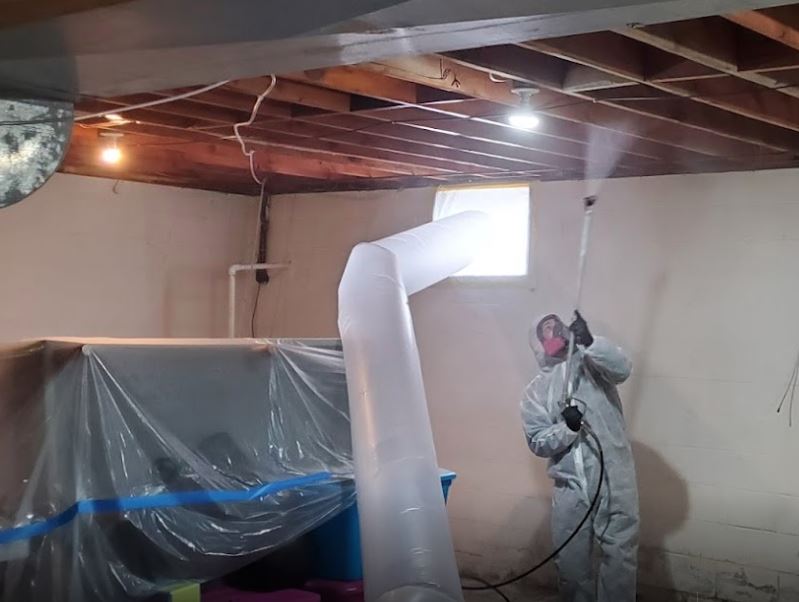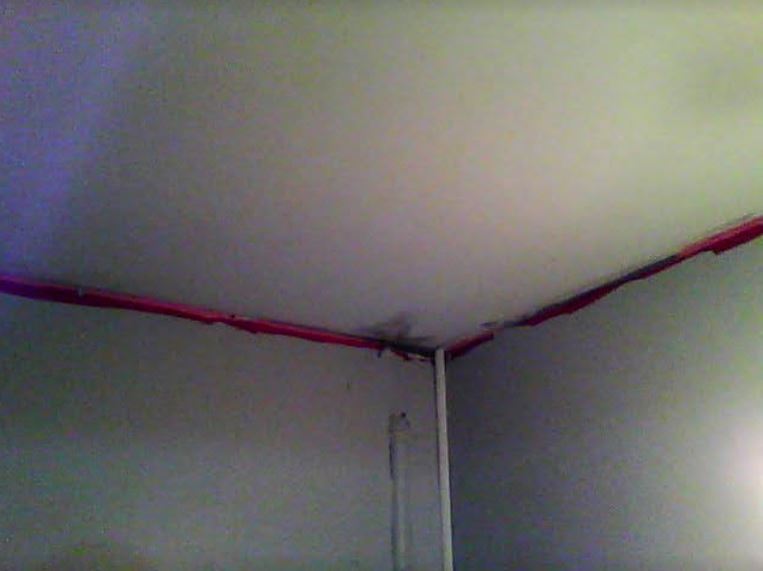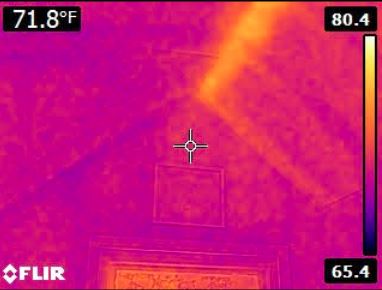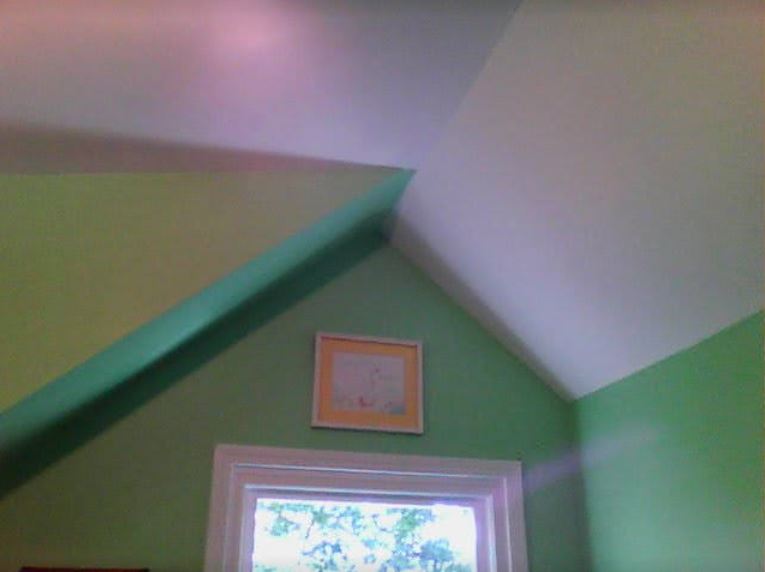
Indoor air quality (IAQ) is an important factor in our health and wellbeing. Poor IAQ can lead to a range of health problems, including allergies, respiratory issues, fatigue, headaches and more. One of the most common causes of poor IAQ in homes throughout New Jersey is mold. Mold thrives in moist environments like those found here at the Jersey Shore. And can easily spread throughout your home or office if indoor air pollutants are left unchecked.
Indoor air quality is affected by mold growth indoors and has an impact on our lives. Here are some tips on how to prevent mold from growing inside your Monmouth or Ocean County home or office. So that you can maintain healthy air quality for yourself and your family.
What Is Mold
Mold, also known as mildew, is a type of fungus that thrives in warm and damp areas. While mold can be found anywhere, it often takes hold in areas with poor ventilation, like basements and bathrooms.
Many people are surprised to learn that there are thousands of species of mold out there. Some create a musty smell, while other molds produce allergens. While harmless types of mold are common and easy to prevent, more severe cases of visible mold growth can require a professional remediation service. Mastertech can eliminate mold from your property.
If you suspect that you have an issue with mold growth, it is important to act quickly. Are you located in Monmouth County, Ocean County, Atlantic or Cape May County, New Jersey? You can call 732-716-2384 or Contact Us now for professional mold inspection, mold testing and mold removal services.
How Does Mold Grow Indoors And Affect Indoor Air Quality
While it may be natural to think of mold spores growing outdoors, this type of fungus can create problems in an indoor environment as well. It often takes the form of black or green patches on walls and ceilings. Mold can affect both the appearance and safety of a home.
Mold needs moisture, warmth, and food (generally in the form of damp organic material such as wood, cloth, or wallpaper glue) in order to flourish. Areas such as kitchens, bathrooms, humidifiers and A/C units should be kept dry at all times. This will help to control indoor mold growth. Regular inspections for signs of indoor mold growth should also be conducted. This will catch any early warning signals before becoming overwhelmed by spores.
If you think your home has been affected by mold growth indoors then it’s essential that you contact our professional mold removal specialists. We know how to properly eradicate the problem before it spreads further.


This image from our mold inspection equipment indicates moisture that is associated with mold.
Health Risks Associated With Poor Indoor Air Quality
Health Risks of Poor IAQ Due to Mold
Mold and health effects go hand in hand. Some of these effects are allergic reactions and respiratory issues. If you or your family members are experiencing any of the following symptoms, it’s time to improve your IAQ:
- Sneezing, coughing, or other allergic reactions
- Nasal congestion or runny nose
- Eye irritation or redness
- Skin rashes or irritation
- Respiratory problems such as asthma attacks
It’s also important to note that some people are more sensitive than others when it comes to mold exposure. Those with weakened immune systems and allergic and irritant types may find that their health issues worsen when there is poor IAQ due to mold in their home. Children, elderly individuals, and pregnant women also tend to be more vulnerable when it comes to being exposed to potentially hazardous allergens like mold.
Identifying Sources of Mold Growth
In order for homeowners to effectively improve their IAQ and reduce the risk of suffering from allergies or respiratory conditions due to mold exposure, they need to first identify the source(s) of the problem.
- Common sources of indoor moisture where mold can grow include:
- Leaky windows and doors
- Plumbing leaks
- Poor ventilation
- Flooding or water damage.
In addition to these sources, any area with standing water should be addressed immediately in order prevent mold growth.
Taking steps such as using dehumidifiers, using exhaust fans when cooking, showering, and drying laundry, as well as conducting regular inspections for water damage can all help reduce the risk of having poor IAQ due to mold in your home.

Our instruments can detect moisture and mold that you may not see in a visual inspection alone.

Importance Of Using A Professional Mold Remediation Service
The Dangers of DIY Mold Removal
Mold can be insidious. It can grow in places you don’t even realize. Places like walls, behind furniture, and under floorboards. And it doesn’t take much for spores to spread throughout your house or office space.
When it comes to mold removal, there is no such thing as “DIY.” Trying to remove mold without professional help will only make the problem worse. Often by spreading more spores into the air and causing further contamination.
The best way to properly remove mold from your Jersey Shore home is with the help of a certified mold remediation team that has access to specialized equipment and techniques designed specifically for removing mold safely and effectively.
What Does Professional Mold Remediation Include?
When you hire a professional mold remediation service, they will first conduct a mold inspection. This is an assessment of your space and identify any areas where there may be excessive mold spores present or potential risk of future contamination due to water damage or other environmental conditions that could create a conducive environment for mold growth.
During our comprehensive MasterTech mold inspection, 4 or more lab samples are taken and sent to a laboratory in Bethesda, MD, the same labs used by the United States government. Within 24 hours we have irrefutable proof of the types of molds present and problematic at your property, the amount of molds and the specific dangers of YOUR mold sample. The extensive information we receive allows us to prepare the most effective and informed remediation and is unique ONLY to MasterTech franchises.
Once this assessment is complete, they will develop an action plan that outlines the steps required to remove the existing contamination and prevent future contamination from occurring.
Depending on the severity of the case, this could include everything from simple dehumidification treatments to more advanced methods such as containment structures, HEPA vacuuming, chemical fogging, and careful cleanup procedures.
Final Thoughts About The Role Of Indoor Air Quality (IAQ) And How It Is Affected By Mold
It is clear that mold can have serious health effects and a detrimental effect on indoor air quality (IAQ). It is important for homeowners to take steps to identify any sources of moisture in their home and address them immediately.
If there are already signs of mold growth or contamination, then professional help should be sought as soon as possible. Professional remediation teams will be able to assess the situation accurately and provide an effective action plan which includes specialized techniques designed specifically for removing mold safely and effectively.
Taking these measures not only improves IAQ but also reduces the risk of suffering from allergies or respiratory conditions due to exposure to hazardous allergens like mold.

